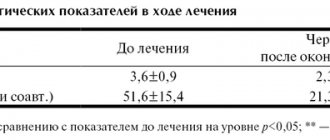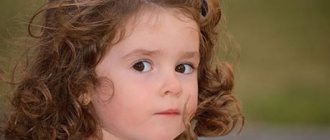Correction of dyslalia, namely: expansion of the lexical resource, development of grammatically correct diction with the help of comprehensive speech therapy classes, is the goal of speech therapy treatment for dyslalia.
The practice of directly correcting speech defects does not show much success, be it the loss, replacement or distortion of letters.
The method of speech therapy for dyslalia involves treating impaired articulation by developing skills in reproducing sounds that are new to the child.
Features of eliminating various forms of dyslalia
Training in correct understanding of oral and written speech occurs alternately: first, children are taught to consciously analyze phonemes, then control their own pronunciation.
In case of severe disorders of phonemic perception, speech pathologists recommend eliminating speech defects while acquiring articulation skills.
The success of eliminating pathology depends on several factors:
- complexity - a combination of two or more speech disorders;
- individual characteristics of the child’s psyche, the ability to perceive and process new information;
- regularity and correctness of the selected correction methods;
- the child’s conscious desire to cooperate with the speech therapist, adequate parental support based on the doctor’s recommendations.
Depending on the form of the disorder, correctional work for dyslalia can be gradual and parallel. Incorrect pronunciation combined with listening comprehension problems can be corrected at the same time.
In a complex case with multiple symptoms, the formation of receptive skills begins with the creation of an articulatory base.
Where does the problem come from?
Mechanical dyslalia is caused by genetic diseases, intrauterine development disorders, and trauma. There are also hereditary characteristics that cannot be called diseases. Organic causes of dyslalia include:
- dentition disorders - absence of incisors, pronounced gaps between them (chapped teeth), malocclusion;
- short frenulum of the tongue or lips;
- large difference in size between the upper and lower jaws;
- too big or small, wide or narrow tongue;
- abnormally high vault of the upper palate;
- abnormalities in the structure of the lips (sedentary, thick, narrow).
A similar condition can be provoked by other specific causes.
Stages of correction work for dyslalia
Modern literature provides examples of using different numbers of correction steps, but practice has shown that the three-stage method has shown better results.
It will include preparatory measures, the development of atriculation skills and the formation of high-quality diction.
The essence of the preparatory period is to establish a trusting partnership between the speech therapist and the child, and actively involve the latter in the therapeutic process.
Basic principles of speech therapy work for dyslalia:
- developing the right attitude, encouraging interest in training;
- assistance in gradually mastering the rules of behavior, following the instructions of the curator during classes;
- development of involuntary attention, stimulation of thought processes, especially comparison and analysis.
Acquiring the ability to isolate and distinguish sounds requires a change in the child’s attitude towards his own pronunciation - the doctor needs to explain the need to pay attention to the external display of speech.
Since the method of developing phonemic perception depends on the type of defect, the goal of the work may be to create phonetic perception and improve self-control of spoken words.
Correction of dyslalia is based on the effective development of the ability to perceive and reproduce phonemes after listening to them repeatedly.
Subsequent automation and consolidation of a new sound pattern are based on training using specially selected words that are simple in terms of phonetic structure and have a low content of distorted sounds.
Signs
You can tell that a child has this disorder by the following signs:
- omission of some sounds in any part of the word;
- replacing sounds with similar ones, although sometimes the correct sounds still appear;
- distortion of a word that is well known to the baby.
At the same time, the grammatical and lexical aspects of speech do not suffer in any way. The syllabic structure of the word is preserved, the vocabulary grows steadily with age, the child uses cases correctly, distinguishes between plural and singular numbers, and can construct a connected statement without logical errors.
Structure of a lesson during correction
The formation of speech motor skills consists of a set of sequential measures, the choice of which depends on each individual case of speech disorder.
The primary goal is to improve the functioning of the speech production organs, then there is a consistent adjustment of phonemic hearing and attentiveness.
Work on the correction of isolated sounds can be carried out simultaneously with recording phonemes by ear.
After successfully mastering the first stage of classes, you can move on to automating the pronunciation of syllables and short words. Later, based on the learned material, train speaking complex sound combinations in sentences.
The emergence and refinement of flaws in spontaneous dialogue speech is the final stage of linguistic training.
Breathing exercises
The basic principles of speech therapy work for dyslalia involve teaching breathing exercises aimed at deepening breathing and increasing lung volume.
An extended exhalation phase is necessary for the smooth pronunciation of long sentences and maintaining a normal respiratory rhythm.
Examples of effective training:
- blow on a thread or feather, observing the correct technique - you cannot puff out your cheeks, your lips should not be too tense, make sure that the exhalation is not forced;
- blow soap bubbles, trying to release air from the lungs as long as possible;
- cooling a hot drink, inflating balloons;
- if possible, play the harmonica, releasing air through a straw into a glass filled with water.
Techniques that develop the functioning of the respiratory system help prevent improper functioning of the articulation organs. The acquired skills need to be consolidated at home; usually, on the recommendation of a speech therapist, independent classes last 5-15 minutes three times a day or more often, but at short intervals of 2-3 minutes.
Articulation gymnastics during treatment
The ability to recognize and recognize phonemes is based on sound analysis, so first operations are performed with words that the child has learned to pronounce correctly.
After the ability to recognize phonetic units has been firmly established, you can move on to methods that develop correct pronunciation.
The process of acquiring skills should occur without coercion and consciously.
Its essence lies in a detailed explanation and demonstration by the speech therapist of how to use the articulatory apparatus to produce various sounds and their combinations.
If repetition is difficult, speech therapy probes or spatulas are used, placed under the tongue until the required form of sound is achieved.
Great importance is attached to age - therapy for preschool children is simpler than for school-age and teenage children.
The method of speech therapy for dyslalia involves 2 directions of influence: the use of general didactic principles and the development of a special approach to a small patient.
Finger gymnastics for correction and treatment
Fine motor skills training develops the area of the brain responsible for clear diction.
Therefore, speech therapy methods for dyslalia, especially the motor form, require training in fine movements of the fingers.
In children with impaired speech, there is a direct correlation with the inability to perform targeted manipulations with their fingertips: it is difficult to hold the pen, the movements of writing and coloring along the contour are imprecise and sweeping.
Classes can be entertaining, enjoyable, and exciting for children:
- coloring pages with lots of small details;
- modeling figures from polymer clay, plasticine;
- cutting out parts, gluing appliqués;
- drawing simple geometric shapes on paper.
Daily repetition of such practices will prepare your hands to hold a pen and help you develop calligraphic handwriting. The appearance of rhythmic movements also helps to improve the clarity of pronunciation.
Setting sound when eliminating a violation
The required sound is achieved using various technical methods. They include imitation of the speech therapist's speech, the use of auxiliary mechanical devices, as well as a combination of these methods.
Onomatopoeia is based on children’s conscious attempts to perform successive atriculation movements, allowing them to achieve a sound identical to the doctor. In combination with acoustic experience, visual reinforcement and exercises for tactile muscles are used.
A speech therapy probe is used to form the correct placement of the organ of articulation during the reproduction of hissing, hard, voiced consonants. Long-term training leads to independent correct pronunciation without tools.
Phoneme automation during correction
Systematic practice of all groups of sounds is necessary to produce clear, intelligible speech, and to prevent the occurrence of erroneous spelling of words under dictation.
The development of a correct lexical stereotype begins with isolated phonemes that children pronounce without errors. Later, automaticity is trained on short words and phrases.
The transition to complex speech forms is the middle stage of automatism exercises.
For oral retelling, short phrases with a clearly formulated idea are offered.
Memorizing poetry and independent narration indicate successful work. To obtain high quality diction, you can learn tongue twisters for certain sound groups.
A lasting result of correctional work for dyslalia is achieved by precise implementation of instructions by patients and parents, who would like to motivate children to frequently repeat new material for short periods of time.
Differentiation exercises during correction
The development of phonemic hearing must begin when a block of work on isolating and automating articulation has been completed. If the child has successfully mastered the skills of pronouncing letter combinations and phrases, you can begin classes aimed at recognizing similar forms of vowels and consonants.
Training tables for reading contain complexes of alternating pairs of syllables; the purpose of reading is to work out sound combinations out loud.
During auditory differentiation training, combinations of letters or words are read out that need to be found among several similar word forms.
If the child is small and does not know how to read, it is suggested to listen by ear to find cards with images of objects and animals. Their names must contain differentiable pairs of letters.
It is advisable that an adult be present during classes with a speech therapist who will repeat similar training at home.
Hearing exercises
Comprehensive training improves hearing, enhances concentration, and helps maintain it for a long period. Children 2-3 years old can be asked to guess the sound of objects they know by ear, which allows parents to show their own imagination.
To improve orientation in space, methods of guessing the source of sound with closed eyes are used. The games are aimed at improving the quality of physical perception, developing sensitivity to tempo, rhythm, and intensity of sound vibrations. Conducted in early preschool age, they prepare children for the correct perception of speech.
When treating a simple case, speech therapy lasts 2-4 months, and combined defects are eliminated after 6-12 months of regular training, attended at least 2 times a week.
Thanks to systematic repetitions of educational and entertaining exercises at home, the correction of defects is completed earlier.
Related posts:
- Dyslalia - from diagnosis to effective treatment Dyslalia in childhood leads to negative consequences of speech development...
- Features of speech therapy work with a group of children with ODD Speech therapy work with children with ODD - methodological recommendations for...
- Logorhythmic classes and correctional means By various means, speech therapy classes contribute to the effective correction of speech in children...
- What do we know about rhinolalia? Rhinolalia in children is diagnosed quite simply. Also her methods...




